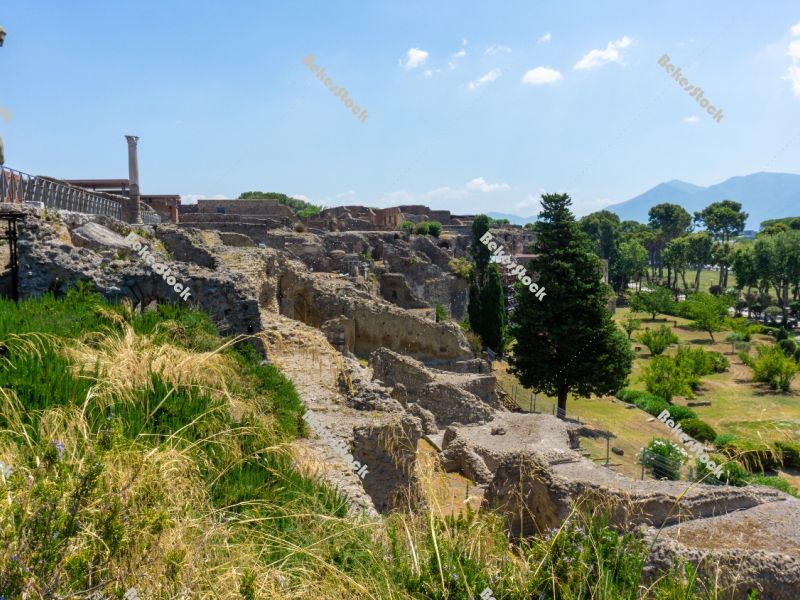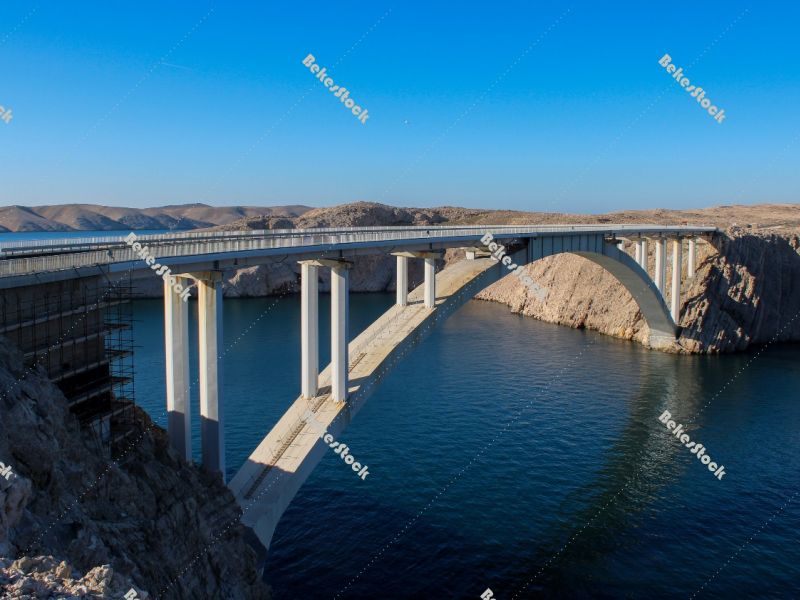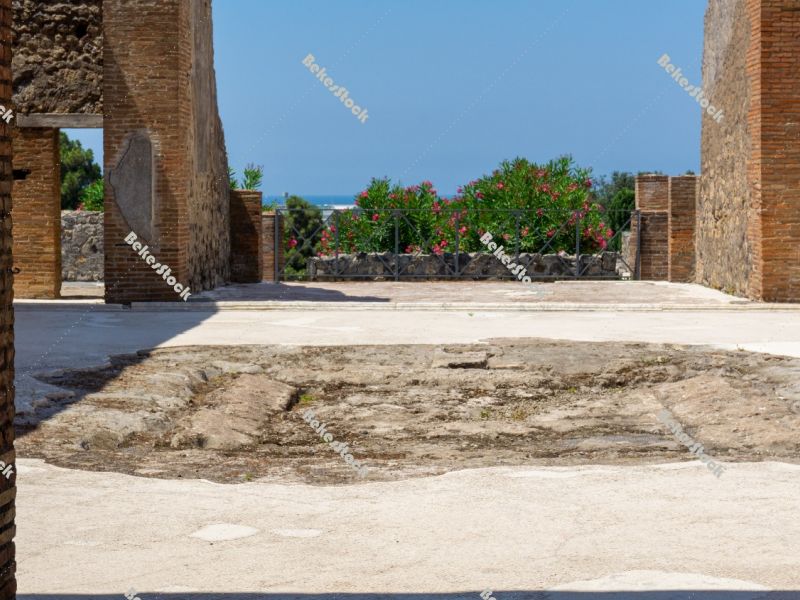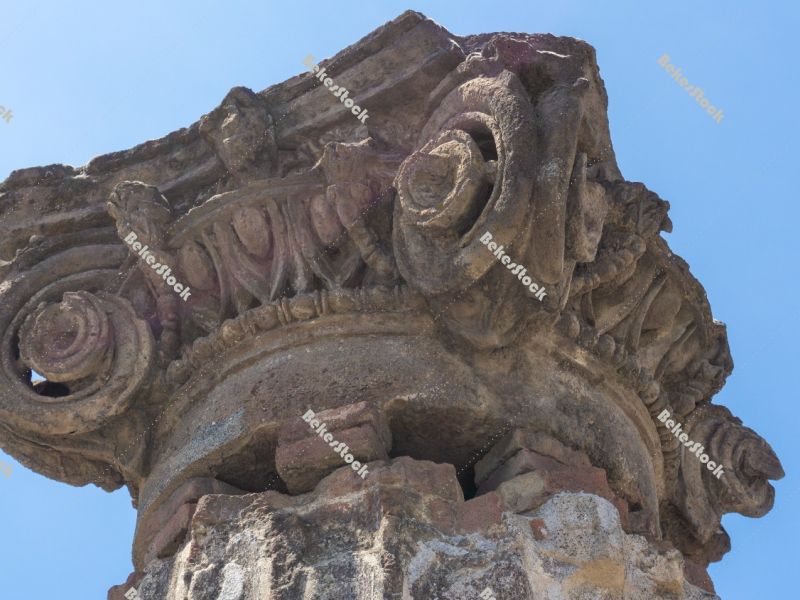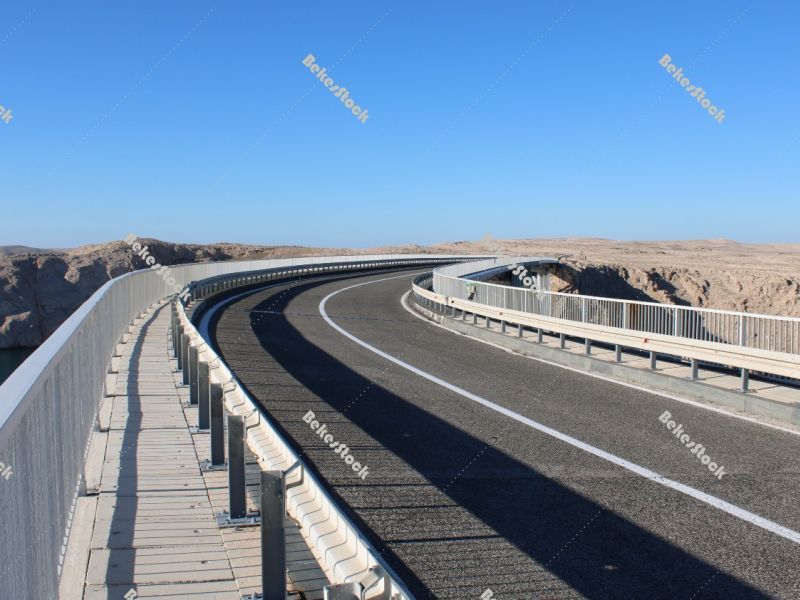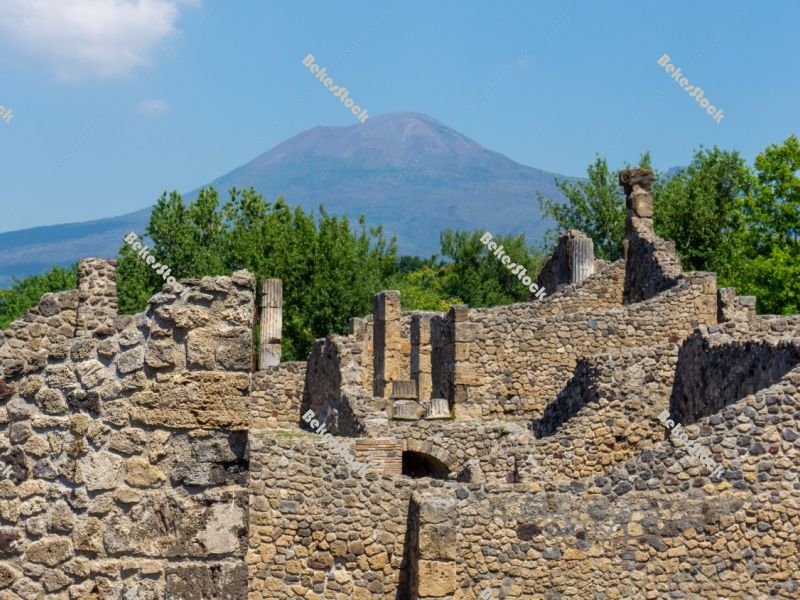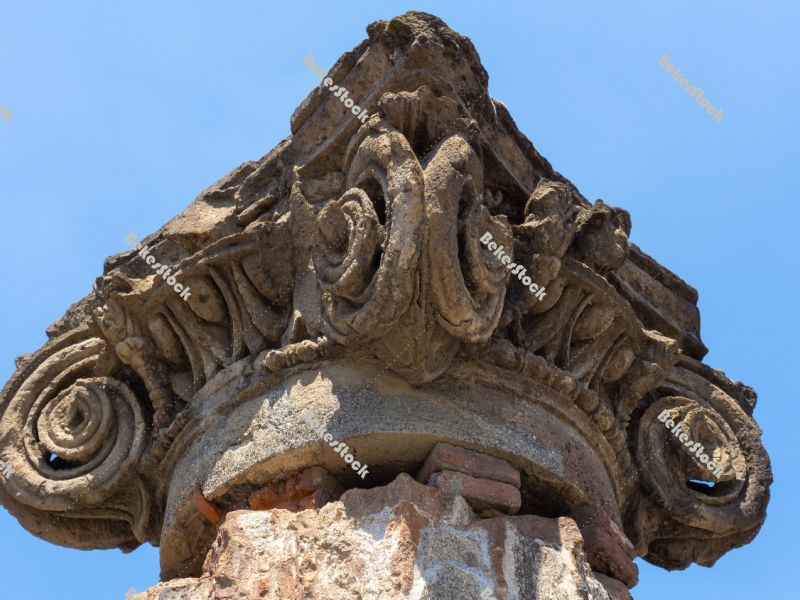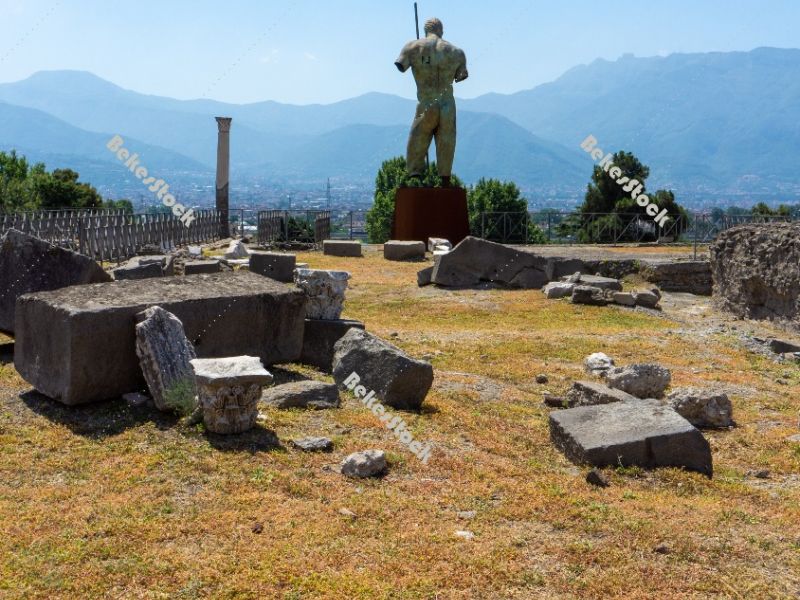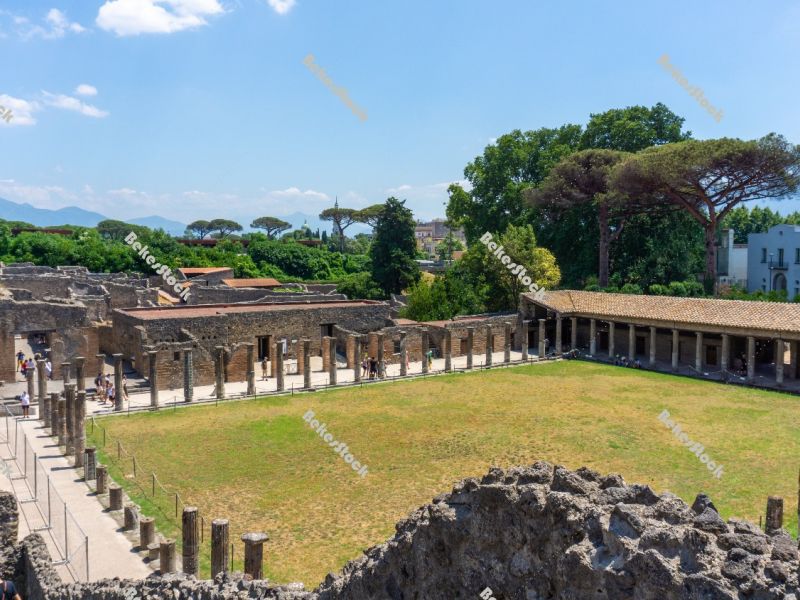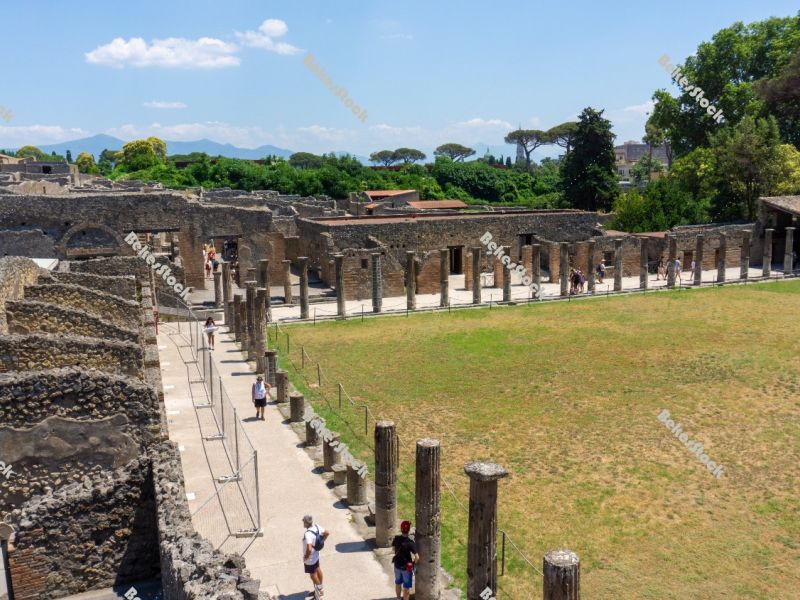Image Tags - blue sky
-
Civil Forum in Pompeii. The blue sky and Mount Vesuvius provide Civil Forum in Pompeii. The blue sky and Mount Vesuvius provide
Civil Forum in Pompeii. The blue sky and Mount Vesuvius provide the backdrop. The Civil Forum is the core of daily life of the city and is the focal point of all the main public buildings for city administration and justice, business management, and trade activities such as markets, as well as the main places of citizen worship. Pompeii was an ancient city located in what is now the comune of Pompei near Naples in the Campania region of Italy. Pompeii, along with Herculaneum and many villas in the surrounding area, was buried under 4 to 6 m of volcanic ash and pumice in the eruption of Mount Vesuvius in AD 79 (1st century). Pompei, Naples (Napoli), Campania, Italy, July 2020. @csabaprog
forum csabaprog decay city tourist architectural sightseeing italian empire architecture paved houses landscape vesuvius old landmark excavation vacation town eruption rome historical disaster ruins 1st house history archaeology demolished sunny patron catastrophe destroyed volcano roman journey trip vesuvio sky stone ruined europe scenary mount mountains ash died walls century mediterranean colorful ancient buried unesco building romanesque famous blue remains excursion beautiful travel overlooked historic symbol vesuvious park naples tourism napoli archeological italyCivil Forum in Pompeii. The blue sky and Mount Vesuvius provide the backdrop. The Civil Forum is the core of daily life of the city and is the focal point of all the main public buildings for city administration and justice, business management, and trade activities such as markets, as well as the main places of citizen worship. Pompeii was an ancient city located in what is now the comune of Pompei near Naples in the Campania region of Italy. Pompeii, along with Herculaneum and many villas in the surrounding area, was buried under 4 to 6 m of volcanic ash and pumice in the eruption of Mount Vesuvius in AD 79 (1st century). Pompei, Naples (Napoli), Campania, Italy, July 2020. @csabaprog
forum csabaprog decay city tourist architectural sightseeing italian empire architecture paved houses landscape vesuvius old landmark excavation vacation town eruption rome historical disaster ruins 1st house history archaeology demolished sunny patron catastrophe destroyed volcano roman journey trip vesuvio sky stone ruined europe scenary mount mountains ash died walls century mediterranean colorful ancient buried unesco building romanesque famous blue remains excursion beautiful travel overlooked historic symbol vesuvious park naples tourism napoli archeological italy -
Bronze statue of Daedalus (`Dedalo`) on the terrace of the Sanct Bronze statue of Daedalus (`Dedalo`) on the terrace of the Sanct
Bronze statue of Daedalus (`Dedalo`) on the terrace of the Sanctuary of Venus in Pompeii. Ancient ruins in the foreground, mountains and a blue sky in the background. Venus was the patron goddess of Pompeii, to whom the colony was named upon conclusion (80 BC). Pompeii was an ancient city located in what is now the comune of Pompei near Naples in the Campania region of Italy. Pompeii, along with Herculaneum and many villas in the surrounding area, was buried under 4 to 6 m of volcanic ash and pumice in the eruption of Mount Vesuvius in AD 79 (1st century). Pompei, Naples (Napoli), Campania, Italy, July 2020. @csabaprog
csabaprog decay venus city tourist architectural sightseeing italian empire sky paved daedalus houses landscape vesuvius old landmark excavation vacation town eruption rome historical disaster ruins 1st house history archaeology demolished sunny patron catastrophe historic bronze volcano roman journey trip vesuvio destroyed vesuvious europe napoli ruined stone architecture scenary mount century ash died colorful overlooked mediterranean symbol beautiful blue ancient unesco religion famous buried remains excursion statue travel romanesque mountains walls naples park sanctuary tourism building archeological italyBronze statue of Daedalus (`Dedalo`) on the terrace of the Sanctuary of Venus in Pompeii. Ancient ruins in the foreground, mountains and a blue sky in the background. Venus was the patron goddess of Pompeii, to whom the colony was named upon conclusion (80 BC). Pompeii was an ancient city located in what is now the comune of Pompei near Naples in the Campania region of Italy. Pompeii, along with Herculaneum and many villas in the surrounding area, was buried under 4 to 6 m of volcanic ash and pumice in the eruption of Mount Vesuvius in AD 79 (1st century). Pompei, Naples (Napoli), Campania, Italy, July 2020. @csabaprog
csabaprog decay venus city tourist architectural sightseeing italian empire sky paved daedalus houses landscape vesuvius old landmark excavation vacation town eruption rome historical disaster ruins 1st house history archaeology demolished sunny patron catastrophe historic bronze volcano roman journey trip vesuvio destroyed vesuvious europe napoli ruined stone architecture scenary mount century ash died colorful overlooked mediterranean symbol beautiful blue ancient unesco religion famous buried remains excursion statue travel romanesque mountains walls naples park sanctuary tourism building archeological italy -
Paški most, Pag Bridge - Pag, Croatia, January 2020 Paški most, Pag Bridge - Pag, Croatia, January 2020
The Pag Bridge is a reinforced concrete arched bridge in Croatia that connects the island of Pag to the mainland. The main road 106 passes through it.
The Pag Bridge is a reinforced concrete arched bridge in Croatia that connects the island of Pag to the mainland. The main road 106 passes through it.
-
Courtyard of a building in Pompeii, with Lenader and the blue sk Courtyard of a building in Pompeii, with Lenader and the blue sk
Courtyard of a building in Pompeii, with Lenader and the blue sky in the background. Pompeii was an ancient city located in what is now the comune of Pompei near Naples in the Campania region of Italy. Pompeii, along with Herculaneum and many villas in the surrounding area, was buried under 4 to 6 m of volcanic ash and pumice in the eruption of Mount Vesuvius in AD 79 (1st century). Pompei, Campania, Italy, July 2020. @csabaprog
csabaprog decay gods city tourist architectural sightseeing italian walls sky paved houses building vesuvius old landmark excavation villa vacation town eruption rome symbol disaster ruins 1st house history archaeology demolished catastrophe destroyed bella volcano leander roman journey mysteries trip vesuvio historic vesuvious europe ruined architecture courtyyard scenary mount misteri overlooked died ash century mediterranean unesco buried remains interior ancient romanesque famous blue colorful excursion beautiful travel empire decorated decoration naples stone napoli tourism historical archeological italyCourtyard of a building in Pompeii, with Lenader and the blue sky in the background. Pompeii was an ancient city located in what is now the comune of Pompei near Naples in the Campania region of Italy. Pompeii, along with Herculaneum and many villas in the surrounding area, was buried under 4 to 6 m of volcanic ash and pumice in the eruption of Mount Vesuvius in AD 79 (1st century). Pompei, Campania, Italy, July 2020. @csabaprog
csabaprog decay gods city tourist architectural sightseeing italian walls sky paved houses building vesuvius old landmark excavation villa vacation town eruption rome symbol disaster ruins 1st house history archaeology demolished catastrophe destroyed bella volcano leander roman journey mysteries trip vesuvio historic vesuvious europe ruined architecture courtyyard scenary mount misteri overlooked died ash century mediterranean unesco buried remains interior ancient romanesque famous blue colorful excursion beautiful travel empire decorated decoration naples stone napoli tourism historical archeological italy -
Ancient Roman column capital (head) with blue sky in the backgro Ancient Roman column capital (head) with blue sky in the backgro
Ancient Roman column capital (head) with blue sky in the background in Pompeii. Pompeii was an ancient city located in what is now the comune of Pompei near Naples in the Campania region of Italy. Pompeii, along with Herculaneum and many villas in the surrounding area, was buried under 4 to 6 m of volcanic ash and pumice in the eruption of Mount Vesuvius in AD 79 (1st century). Pompei, Naples (Napoli), Campania, Italy, July 2020. @csabaprog
csabaprog decay city tourist architectural sightseeing italian empire sky paved vesuvious landscape vesuvius old landmark excavation vacation town eruption rome historical disaster ruins 1st house history archaeology demolished sunny patron catastrophe destroyed volcano roman journey trip vesuvio column stone houses scenary mount building europe died ruined century mediterranean ash ancient architecture capital naples romanesque famous buried remains excursion beautiful travel blue overlooked unesco historic park napoli tourism symbol archeological italyAncient Roman column capital (head) with blue sky in the background in Pompeii. Pompeii was an ancient city located in what is now the comune of Pompei near Naples in the Campania region of Italy. Pompeii, along with Herculaneum and many villas in the surrounding area, was buried under 4 to 6 m of volcanic ash and pumice in the eruption of Mount Vesuvius in AD 79 (1st century). Pompei, Naples (Napoli), Campania, Italy, July 2020. @csabaprog
csabaprog decay city tourist architectural sightseeing italian empire sky paved vesuvious landscape vesuvius old landmark excavation vacation town eruption rome historical disaster ruins 1st house history archaeology demolished sunny patron catastrophe destroyed volcano roman journey trip vesuvio column stone houses scenary mount building europe died ruined century mediterranean ash ancient architecture capital naples romanesque famous buried remains excursion beautiful travel blue overlooked unesco historic park napoli tourism symbol archeological italy -
Paški most, Pag Bridge - Pag, Croatia, January 2020 Paški most, Pag Bridge - Pag, Croatia, January 2020
The Pag Bridge is a reinforced concrete arched bridge in Croatia that connects the island of Pag to the mainland. The main road 106 passes through it. The winding road runs into the blue sky. Pag, Croatia, January 2020. @csabaprog
croatia horvatorszag 106 2020 adria architecture attraction beautiful blue bridge building dalmatia december europe january mainland monument outdoor pag paski paskimost paški road sightseeing sky stone tourism travel view winter reinforced concrete arched connects island main passes winding runs csabaprogThe Pag Bridge is a reinforced concrete arched bridge in Croatia that connects the island of Pag to the mainland. The main road 106 passes through it. The winding road runs into the blue sky. Pag, Croatia, January 2020. @csabaprog
croatia horvatorszag 106 2020 adria architecture attraction beautiful blue bridge building dalmatia december europe january mainland monument outdoor pag paski paskimost paški road sightseeing sky stone tourism travel view winter reinforced concrete arched connects island main passes winding runs csabaprog -
Ancient ruins of Pompeii, with Mount Vesuvius (`Vesuvio`) in the Ancient ruins of Pompeii, with Mount Vesuvius (`Vesuvio`) in the
Ancient ruins of Pompeii, with Mount Vesuvius (`Vesuvio`) in the background. The photo clearly shows the volcano and the cloudy blue sky. Pompeii was an ancient city located in what is now the comune of Pompei near Naples in the Campania region of Italy. Pompeii, along with Herculaneum and many villas in the surrounding area, was buried under 4 to 6 m of volcanic ash and pumice in the eruption of Mount Vesuvius in AD 79 (1st century). Pompei, Naples (Napoli), Campania, Italy, July 2020. @csabaprog
csabaprog decay city tourist architectural sightseeing italian empire sky paved houses landscape vesuvius old landmark excavation vacation town eruption rome historical disaster ruins 1st house history archaeology demolished sunny patron catastrophe destroyed volcano roman journey trip vesuvio symbol ruined building europe scenary mount century naples died napoli overlooked mediterranean ancient architecture vesuvious buried historic romanesque famous blue colorful excursion beautiful travel remains unesco walls ash park stone tourism mountains archeological italyAncient ruins of Pompeii, with Mount Vesuvius (`Vesuvio`) in the background. The photo clearly shows the volcano and the cloudy blue sky. Pompeii was an ancient city located in what is now the comune of Pompei near Naples in the Campania region of Italy. Pompeii, along with Herculaneum and many villas in the surrounding area, was buried under 4 to 6 m of volcanic ash and pumice in the eruption of Mount Vesuvius in AD 79 (1st century). Pompei, Naples (Napoli), Campania, Italy, July 2020. @csabaprog
csabaprog decay city tourist architectural sightseeing italian empire sky paved houses landscape vesuvius old landmark excavation vacation town eruption rome historical disaster ruins 1st house history archaeology demolished sunny patron catastrophe destroyed volcano roman journey trip vesuvio symbol ruined building europe scenary mount century naples died napoli overlooked mediterranean ancient architecture vesuvious buried historic romanesque famous blue colorful excursion beautiful travel remains unesco walls ash park stone tourism mountains archeological italy -
Ancient Roman column capital (head) with blue sky in the backgro Ancient Roman column capital (head) with blue sky in the backgro
Ancient Roman column capital (head) with blue sky in the background in Pompeii. Pompeii was an ancient city located in what is now the comune of Pompei near Naples in the Campania region of Italy. Pompeii, along with Herculaneum and many villas in the surrounding area, was buried under 4 to 6 m of volcanic ash and pumice in the eruption of Mount Vesuvius in AD 79 (1st century). Pompei, Naples (Napoli), Campania, Italy, July 2020. @csabaprog
csabaprog decay city tourist architectural sightseeing italian empire sky paved vesuvious landscape vesuvius old landmark excavation vacation town eruption rome historical disaster ruins 1st house history archaeology demolished sunny patron catastrophe destroyed volcano roman journey trip vesuvio column stone houses scenary mount building europe died ruined century mediterranean ash ancient architecture capital naples romanesque famous buried remains excursion beautiful travel blue overlooked unesco historic park napoli tourism symbol archeological italyAncient Roman column capital (head) with blue sky in the background in Pompeii. Pompeii was an ancient city located in what is now the comune of Pompei near Naples in the Campania region of Italy. Pompeii, along with Herculaneum and many villas in the surrounding area, was buried under 4 to 6 m of volcanic ash and pumice in the eruption of Mount Vesuvius in AD 79 (1st century). Pompei, Naples (Napoli), Campania, Italy, July 2020. @csabaprog
csabaprog decay city tourist architectural sightseeing italian empire sky paved vesuvious landscape vesuvius old landmark excavation vacation town eruption rome historical disaster ruins 1st house history archaeology demolished sunny patron catastrophe destroyed volcano roman journey trip vesuvio column stone houses scenary mount building europe died ruined century mediterranean ash ancient architecture capital naples romanesque famous buried remains excursion beautiful travel blue overlooked unesco historic park napoli tourism symbol archeological italy -
Sanctuary of Venus with bronze statue of Daedalus (`Dedalo`) in Sanctuary of Venus with bronze statue of Daedalus (`Dedalo`) in
Sanctuary of Venus with bronze statue of Daedalus (`Dedalo`) in the background in Pompeii. Ancient ruins in the foreground, mountains and a blue sky in the background. Venus was the patron goddess of Pompeii, to whom the colony was named upon conclusion (80 BC). Pompeii was an ancient city located in what is now the comune of Pompei near Naples in the Campania region of Italy. Pompeii, along with Herculaneum and many villas in the surrounding area, was buried under 4 to 6 m of volcanic ash and pumice in the eruption of Mount Vesuvius in AD 79 (1st century). Pompei, Naples (Napoli), Campania, Italy, July 2020. @csabaprog
csabaprog decay venus city tourist architectural sightseeing italian empire architecture paved daedalus houses landscape vesuvius old landmark excavation vacation town eruption rome historical disaster ruins 1st house history archaeology demolished sunny patron catastrophe historic bronze volcano roman journey trip vesuvio destroyed vesuvious europe stone napoli sky scenary mount walls overlooked died colorful century mediterranean mountains blue beautiful ancient unesco romanesque famous buried remains excursion statue travel ruined ash naples sanctuary park building tourism symbol archeological italySanctuary of Venus with bronze statue of Daedalus (`Dedalo`) in the background in Pompeii. Ancient ruins in the foreground, mountains and a blue sky in the background. Venus was the patron goddess of Pompeii, to whom the colony was named upon conclusion (80 BC). Pompeii was an ancient city located in what is now the comune of Pompei near Naples in the Campania region of Italy. Pompeii, along with Herculaneum and many villas in the surrounding area, was buried under 4 to 6 m of volcanic ash and pumice in the eruption of Mount Vesuvius in AD 79 (1st century). Pompei, Naples (Napoli), Campania, Italy, July 2020. @csabaprog
csabaprog decay venus city tourist architectural sightseeing italian empire architecture paved daedalus houses landscape vesuvius old landmark excavation vacation town eruption rome historical disaster ruins 1st house history archaeology demolished sunny patron catastrophe historic bronze volcano roman journey trip vesuvio destroyed vesuvious europe stone napoli sky scenary mount walls overlooked died colorful century mediterranean mountains blue beautiful ancient unesco romanesque famous buried remains excursion statue travel ruined ash naples sanctuary park building tourism symbol archeological italy -
QUADRIPORTICUS OF THE THEATRES OR GLADIATORS BARRACKS in Pompeii QUADRIPORTICUS OF THE THEATRES OR GLADIATORS BARRACKS in Pompeii
QUADRIPORTICUS OF THE THEATRES OR GLADIATORS BARRACKS in Pompeii. In the background you can see mountains, trees and a blue sky. Behind the scene of the Large Theatre there is a large quadrangle surrounded by 74 Doric grey tuff columns of Nocera used as a foyer, an area where the spectators could stop during the intervals of the theatre shows. After the earthquake of 62 AD the building changed its function and became a barracks for gladiators, which resulted in certain parts of the building being reorganised. The most important rooms were those on the eastern side whereas the rooms upstairs may have been the apartments of the undertaker of the gladiators. Pompeii was an ancient city located in what is now the comune of Pompei near Naples in the Campania region of Italy. Pompeii, along with Herculaneum and many villas in the surrounding area, was buried under 4 to 6 m of volcanic ash and pumice in the eruption of Mount Vesuvius in AD 79 (1st century). Pompei, Naples (Napoli), Campania, Italy, July 2020. @csabaprog
ornament csabaprog decay gladiator city tourist panorama architectural sightseeing italian empire architecture paved barrack teatro houses building vesuvius old landmark mountains vacation town eruption rome historical disaster ruins 1st house history archaeology ancient sunny catastrophe historic volcano theatre doric trees roman journey trip vesuvio column tall ruined scenary mount died vesuvious century mediterranean excavation europe naples napoli unesco romanesque famous buried colorful excursion beautiful travel ash overlooked sky remains destroyed demolished tourism stone archeological italyQUADRIPORTICUS OF THE THEATRES OR GLADIATORS BARRACKS in Pompeii. In the background you can see mountains, trees and a blue sky. Behind the scene of the Large Theatre there is a large quadrangle surrounded by 74 Doric grey tuff columns of Nocera used as a foyer, an area where the spectators could stop during the intervals of the theatre shows. After the earthquake of 62 AD the building changed its function and became a barracks for gladiators, which resulted in certain parts of the building being reorganised. The most important rooms were those on the eastern side whereas the rooms upstairs may have been the apartments of the undertaker of the gladiators. Pompeii was an ancient city located in what is now the comune of Pompei near Naples in the Campania region of Italy. Pompeii, along with Herculaneum and many villas in the surrounding area, was buried under 4 to 6 m of volcanic ash and pumice in the eruption of Mount Vesuvius in AD 79 (1st century). Pompei, Naples (Napoli), Campania, Italy, July 2020. @csabaprog
ornament csabaprog decay gladiator city tourist panorama architectural sightseeing italian empire architecture paved barrack teatro houses building vesuvius old landmark mountains vacation town eruption rome historical disaster ruins 1st house history archaeology ancient sunny catastrophe historic volcano theatre doric trees roman journey trip vesuvio column tall ruined scenary mount died vesuvious century mediterranean excavation europe naples napoli unesco romanesque famous buried colorful excursion beautiful travel ash overlooked sky remains destroyed demolished tourism stone archeological italy -
QUADRIPORTICUS OF THE THEATRES OR GLADIATORS BARRACKS in Pompeii QUADRIPORTICUS OF THE THEATRES OR GLADIATORS BARRACKS in Pompeii
QUADRIPORTICUS OF THE THEATRES OR GLADIATORS BARRACKS in Pompeii. In the background you can see mountains, trees and a blue sky. Behind the scene of the Large Theatre there is a large quadrangle surrounded by 74 Doric grey tuff columns of Nocera used as a foyer, an area where the spectators could stop during the intervals of the theatre shows. After the earthquake of 62 AD the building changed its function and became a barracks for gladiators, which resulted in certain parts of the building being reorganised. The most important rooms were those on the eastern side whereas the rooms upstairs may have been the apartments of the undertaker of the gladiators. Pompeii was an ancient city located in what is now the comune of Pompei near Naples in the Campania region of Italy. Pompeii, along with Herculaneum and many villas in the surrounding area, was buried under 4 to 6 m of volcanic ash and pumice in the eruption of Mount Vesuvius in AD 79 (1st century). Pompei, Naples (Napoli), Campania, Italy, July 2020. @csabaprog
ornament csabaprog decay gladiator city tourist panorama architectural sightseeing italian empire architecture paved barrack teatro houses building vesuvius old landmark mountains vacation town eruption rome historical disaster ruins 1st house history archaeology ancient sunny catastrophe historic volcano theatre doric trees roman journey trip vesuvio column tall ruined scenary mount died vesuvious century mediterranean excavation europe naples napoli unesco romanesque famous buried colorful excursion beautiful travel ash overlooked sky remains destroyed demolished tourism stone archeological italyQUADRIPORTICUS OF THE THEATRES OR GLADIATORS BARRACKS in Pompeii. In the background you can see mountains, trees and a blue sky. Behind the scene of the Large Theatre there is a large quadrangle surrounded by 74 Doric grey tuff columns of Nocera used as a foyer, an area where the spectators could stop during the intervals of the theatre shows. After the earthquake of 62 AD the building changed its function and became a barracks for gladiators, which resulted in certain parts of the building being reorganised. The most important rooms were those on the eastern side whereas the rooms upstairs may have been the apartments of the undertaker of the gladiators. Pompeii was an ancient city located in what is now the comune of Pompei near Naples in the Campania region of Italy. Pompeii, along with Herculaneum and many villas in the surrounding area, was buried under 4 to 6 m of volcanic ash and pumice in the eruption of Mount Vesuvius in AD 79 (1st century). Pompei, Naples (Napoli), Campania, Italy, July 2020. @csabaprog
ornament csabaprog decay gladiator city tourist panorama architectural sightseeing italian empire architecture paved barrack teatro houses building vesuvius old landmark mountains vacation town eruption rome historical disaster ruins 1st house history archaeology ancient sunny catastrophe historic volcano theatre doric trees roman journey trip vesuvio column tall ruined scenary mount died vesuvious century mediterranean excavation europe naples napoli unesco romanesque famous buried colorful excursion beautiful travel ash overlooked sky remains destroyed demolished tourism stone archeological italy


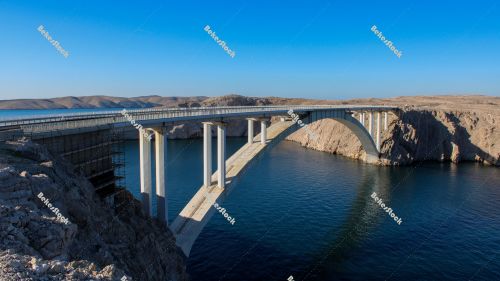

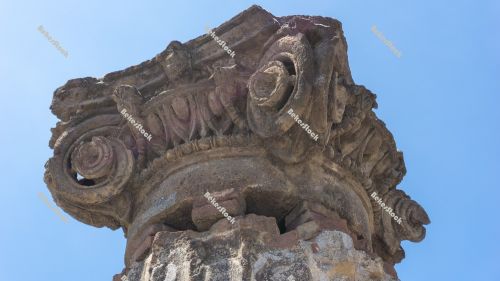

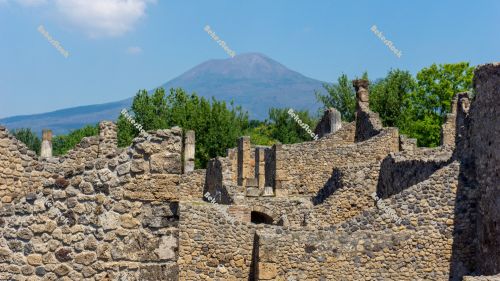

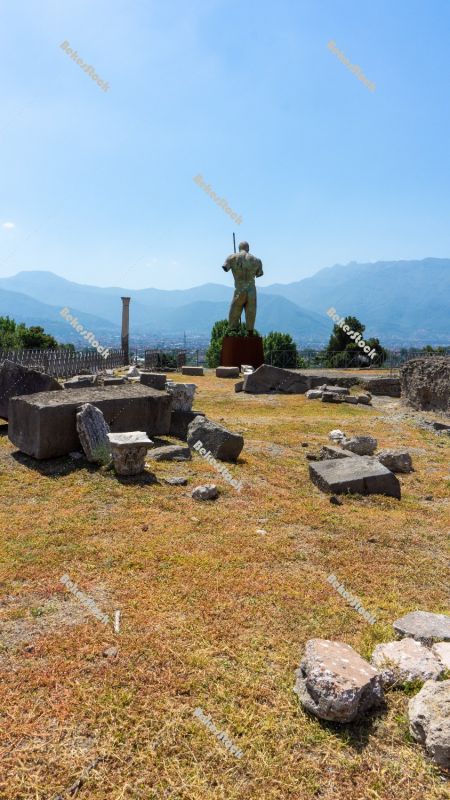
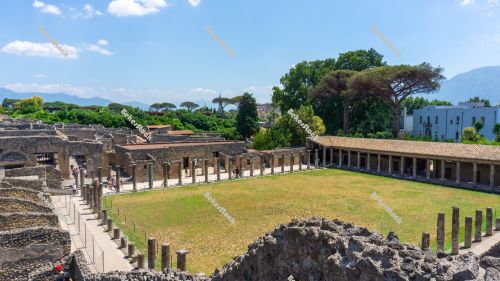
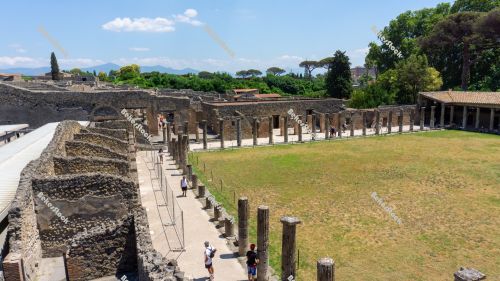
-
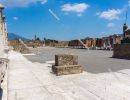 Civil Forum in Pompeii. The blue sky and Mount Vesuvius provide
Civil Forum in Pompeii. The blue sky and Mount Vesuvius provide -
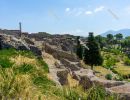 Bronze statue of Daedalus (`Dedalo`) on the terrace of the Sanct
Bronze statue of Daedalus (`Dedalo`) on the terrace of the Sanct -
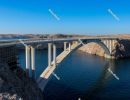 Paški most, Pag Bridge - Pag, Croatia, January 2020
Paški most, Pag Bridge - Pag, Croatia, January 2020 -
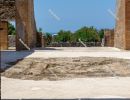 Courtyard of a building in Pompeii, with Lenader and the blue sk
Courtyard of a building in Pompeii, with Lenader and the blue sk -
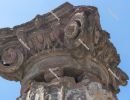 Ancient Roman column capital (head) with blue sky in the backgro
Ancient Roman column capital (head) with blue sky in the backgro -
 Paški most, Pag Bridge - Pag, Croatia, January 2020
Paški most, Pag Bridge - Pag, Croatia, January 2020 -
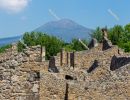 Ancient ruins of Pompeii, with Mount Vesuvius (`Vesuvio`) in the
Ancient ruins of Pompeii, with Mount Vesuvius (`Vesuvio`) in the -
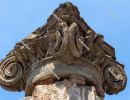 Ancient Roman column capital (head) with blue sky in the backgro
Ancient Roman column capital (head) with blue sky in the backgro -
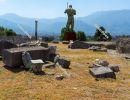 Sanctuary of Venus with bronze statue of Daedalus (`Dedalo`) in
Sanctuary of Venus with bronze statue of Daedalus (`Dedalo`) in -
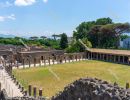 QUADRIPORTICUS OF THE THEATRES OR GLADIATORS BARRACKS in Pompeii
QUADRIPORTICUS OF THE THEATRES OR GLADIATORS BARRACKS in Pompeii -
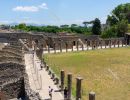 QUADRIPORTICUS OF THE THEATRES OR GLADIATORS BARRACKS in Pompeii
QUADRIPORTICUS OF THE THEATRES OR GLADIATORS BARRACKS in Pompeii


